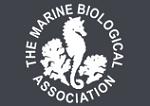
APHOTOMARINE
An educational resource dedicated mainly to the photography
and diversity of marine life that can be found in coastal waters
and intertidal areas of Great Britain and Ireland by David Fenwick.

Axinella damicornis (Esper, 1794) ? - Crumpled duster sponge (Sponge / Porifera images)
Scroll down and rollover titles to change screen image or click on title to view image.
Crumpled duster sponge
Axinella damicornis ?
- washed-up on beach 1
Axinella damicornis ?
- washed-up on beach 1
Crumpled duster sponge
Axinella damicornis ?
- dry sponge lateral view 1
Crumpled duster sponge
Axinella damicornis ?
- dry sponge dorsal view 1
Crumpled duster sponge
Axinella damicornis ?
- spicules 0.1mm division rule 1
Crumpled duster sponge
Axinella damicornis ?
- spicules 0.1mm division rule 2
Specimen found washed-up after gale on the strandline of the northern edge of Carnsew Pool, Hayle, Cornwall. 17.03.16.
This is the most like species for the specimen given the spicule size and range. A considerable number of spicules were broken, which made determination more difficult.
APHOTOMARINE supports open source data recording and sharing for the benefit of wildlife, recorders, research, science and education. The project recommends the following websites and works with the following bodies and organisations.
A website based on Sponges of the British Isles 1992 Edition, revised and extended, 2007, by Bernard Picton, Christine Morrow & Rob van Soest. Without a shadow of a doubt the best online resource to sponges of Britain and Ireland.
The Marine Biological Association or MBA, based in Plymouth, is one of the world’s longest-running societies dedicated to promoting research into our oceans and the life they support. Since 1884 the MBA has been providing a unified, clear, independent voice on behalf of the marine biological community.It has a growing membership in over 40 countries.
The National Biodiversity Network or NBN is a charity that supports open source data sharing and recording supporting conservation, science and education. "Why do recorders need open source?". Simply because it supports the core values of wildlife recording and the free use of records and data over a very wide network that includes partners like the Natural History Museum.
The taxonomy used here is based on that of the following database, which is also used by the MBA, NHM and the NBN.
The World Register of Marine Species or WoRMS.

The main objective of this website is in furthering environmental awareness and education through the medium of photography. To increase awareness and access to the wildlife of the region and help
people find and identify it. Sometimes the difference between species is obvious but many species can only be determined by observing microscopic characteristics that are specific to any one species.

